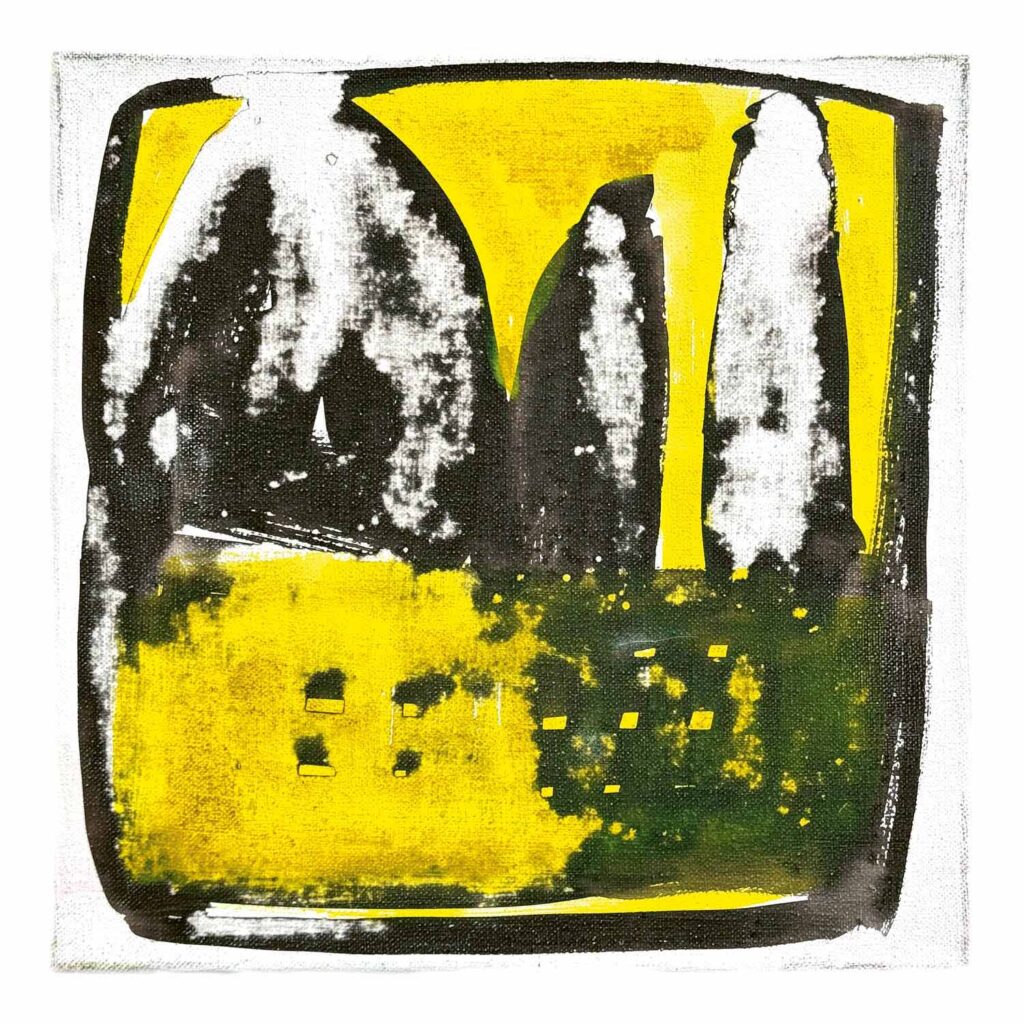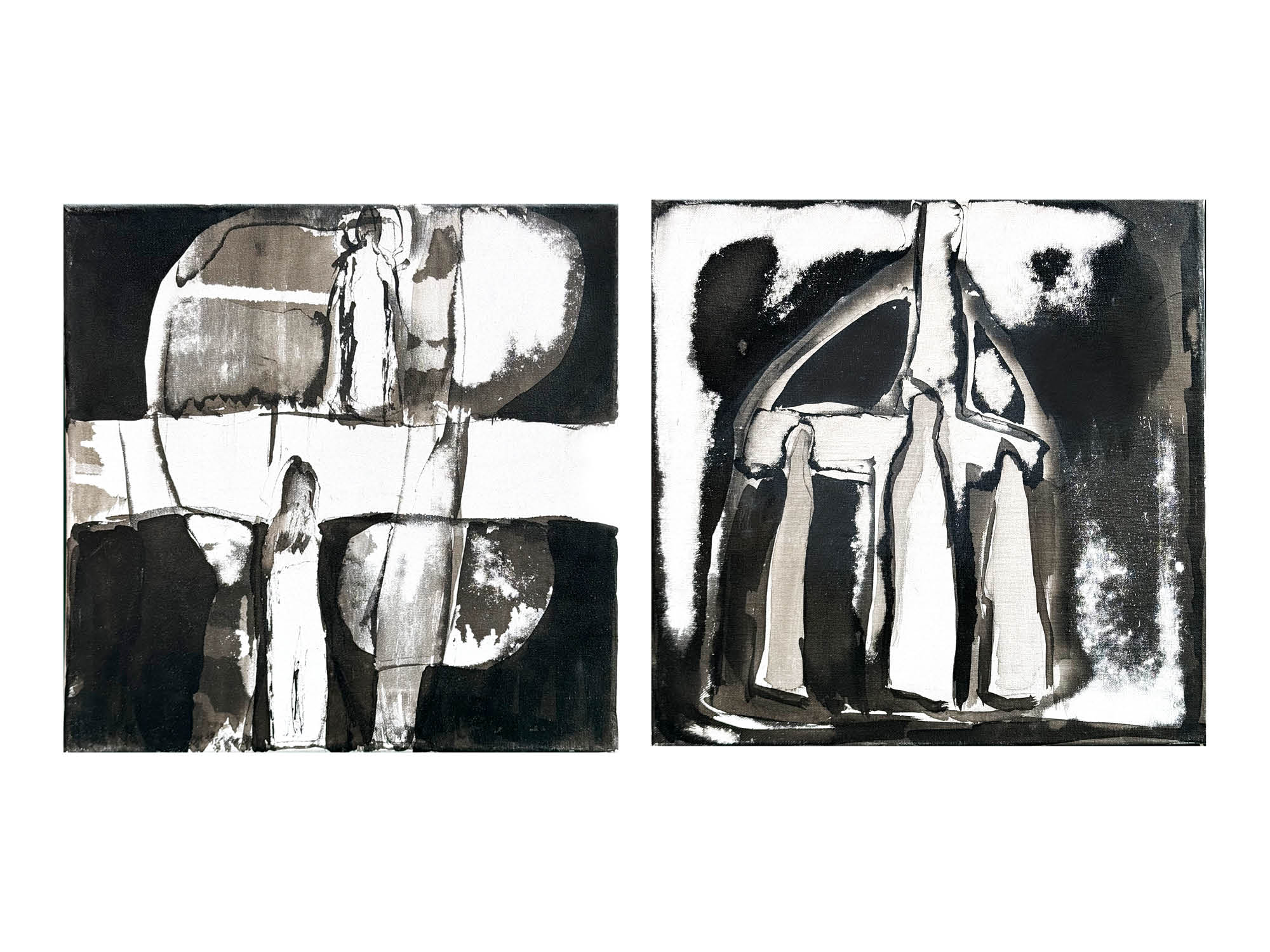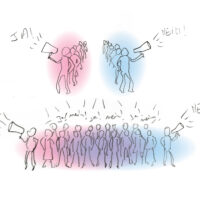Spiritual development involves different dimensions that need to be distinguished. In the following essay, the author emphasizes two sides of the spiritual path—the path of knowledge and the path of the heart. Understanding this differentiation can help us avoid reaching an inner dead end.
In spiritual circles, we repeatedly encounter the concept of “enlightenment.” It’s not uncommon for this to be understood as the highest peak of human development, the realization of the ultimate goal, or even the achievement of a semi-divine state. But, a discerning look shows us that there is actually not just one enlightenment, but different types of enlightenment experiences, all of varying importance in relation to further development. This is how we begin to understand the far-reaching significance of Rudolf Steiner’s statement, in line with all wisdom-filled spiritual currents:
Therefore, anyone searching for the secrets of human nature through intuition must follow the golden rule of the true secret sciences. And this golden rule is: When you attempt to take one step forward in the knowledge of secret truths, then, at the same time, take three steps forward in the perfection of your character towards the good.1
This rule is not always followed, and yet deep spiritual experiences, indeed, even enlightenment, are possible through meditation techniques alone. How can this be understood?
Laws of Inner Development
As on the physical plane, there are also laws on the spiritual plane. One of them says that a dimensionless point is, at the same time, everything. This means that when we are able to experience this point, through concentration or through an unexpected event, barring all concepts that would partition this one point, then we are immediately “all-one” with the cosmic being, through a kind of turning inside-out, in an experience of enlightenment.
Another law states that on the spiritual level, two identical qualities cannot occupy different spaces, unlike physical objects. So, when we want to intuitively experience a certain spiritual-soul level of being, we must first bring the corresponding level into realization within us.
Most of the meditations practiced today have their origins in Eastern philosophy. They were introduced by Hindu gurus, Buddhist lamas, or Zen masters and, in their wisdom, follow the two laws mentioned above from the outset—the realization of the dimensionless point in spiritual life and qualitative correspondences in the life of the soul. The training of qualities such as humility, devotion, and empathy, however outmoded they may sound today, are seen as indispensable on the inner path to the unfolding of a harmonious “conscious-being” [Bewusst-Sein].2 In our time, however, there is a tendency to ignore individual elements of the wisdom-filled traditions and to understand the inner path as a pure exercise in concentration, while the training of character towards the good is neglected.
In the rest of this article, the path that strives, primarily through concentration, for the dimensionless point as the gateway to enlightenment will be referred to as the “path of knowledge.” The path on which concentration and the unfolding of the virtues are developed in harmony will be called the “path of the heart.” Choosing either one or the other of these spiritual paths has consequences for the resulting inner experiences.
Although the purification and consolidation of character is neglected on the path of knowledge, it can lead to experiences of enlightenment via increased concentration. The path of the heart also has the aim to bring the imaginative life to stillness but does so primarily in order to use the resulting soul power to strengthen the character. On this path, we are guided less by the striving for suprasensible experience than by the longing to experience and integrate the essence of our self-being [Selbst-Sein] in its purity.
The Gate of the Head
Upon both paths, the restlessness of our imaginary life is transformed, so to speak, into a still surface of water, whereby the exclusive identification with the body is overcome. As a result, the ‘I,’ which derives its existence from the polar view of I and Thou, detaches itself from the center between the eyes.
On the path of knowledge, this detachment initiates the transcendence of the head, whereby the seeker, in the corresponding enlightenment, is granted the intuitive experience of general conscious-being, which experiences itself as spirit. It is a cosmic conscious-being that underlies the whole of creation and reveals itself in the human being through the ‘I’ as self-conscious-being [Selbstbewusst-Sein].
On the path of the heart, the detachment of the ‘I’ is not immediately followed by the enlightenment of the general conscious-being, but rather is preceded by the purification of the soul through “baptism by water.” This process is often depicted symbolically in the traditions of Christian spirituality.
The ‘I,’ freed from its centering on the head, falls down to the bottom of the pool. This is where the baptism by water occurs, symbolically represented as the marriage of the king and the queen. The new human being proceeds from this union of male, the sun, and female, the moon. However, because two identical qualities cannot occupy two different spaces on the spiritual level, the soul overcomes the “gate of the head” by a leap, so to speak, and experiences, in enlightenment, the general conscious-being, the cosmic sphere of stars. This first experience of being lays the foundation for a path of development based on truth.
This experience of enlightenment is quite similar to enlightenment on the path of knowledge. However, if it has been realized through a meditation technique or a vision that was given unexpectedly, those who have experienced it will say that the conscious-being of our true self, our ‘I’, perceives our thoughts and emotions, which we, ourselves, are not, but only have. All will turn on this one experience, and the conclusion will be that conscious-being, the spirit, is the divine itself. These human beings will not speak of an experience of “essence,” and yet, in this sphere, since no time exists in it, they will see enlightenment, the salvation of their self. However, this does not allow for a more precise differentiation between conscious-being, self, and ‘I’. Any enlightenment that does not transcend itself represents a dead end of inner development, for then, we will only develop a self-centered, abstract worldview without God. Without the unfolding of devotion, which alone can lead us beyond the limitations of ‘I’-centeredness and, thereby, beyond the danger of the accompanying arrogance, there can be no further deepening of development. And since we cannot surrender to ourselves, we must do so to a higher being outside ourselves.
When the inner path leads the striving human being to first undergo the baptism by water—the purification of the astral body—then, one will experience such enlightenment as a heavy disillusionment because, although one also experiences conscious-being as a pure spirit, one is unable to cognize any view beyond this that could satisfy inner longing. In Christian spirituality, the enlightenment that takes place through baptism by water is referred to as the cosmic Virgin Sophia.
Although both paths lead to the same experience, the understanding and classification are different. Thus, Rudolf Steiner’s statement about the necessity of perfecting the character towards the good does not only refer to the preparatory stages of the inner path but is also of fundamental importance with regard to experiences of enlightenment.
The Greater Guardian of the Threshold
On the path of knowledge, when concentration is deepened to the point of achieving a complete emptiness in the head, the dimensionless point can then be brought to realization, whereby the head itself is transcended by experiencing it as the coagulated image of the cosmos. Through a kind of turning inside-out, the cosmic corporeality of the Father is intuitively revealed to the seeker. Those who experience such enlightenment will speak of “all-one-being” [All-eins-Sein] with the cosmos, of the awareness of boundlessness, in which they see, as a solitary witness, the galaxies arise and pass away. Such enlightenment contained within itself, which does not reach beyond itself, is mistakenly understood as the one all-encompassing enlightenment, as if, through it, one also has the omnipotence of God. But, with the perception of all-one-being comes the knowledge of alone-being [Alleine-Seins]. Since no being outside of myself can be known, the assumption is made that God, in his alone-being, created the world out of boredom. In this experience of enlightenment, we are trapped in the cycle of the cosmic law of the dimensionless point, the turning inside-out of conscious-being to limitless being and again through turning outside-in to bounded form.
In the secret symbols of Christian mysticism, we find this process in the picture of the Ouroboros, the snake of eternity, which consumes itself as it circles.
On the path of the heart, we not only deepen a meditation technique but rather also seek to follow Christ’s call: “Unless one is born of water and spirit, he cannot enter the kingdom of God” (John 3:5). When a deep longing is kindled in us, a stirring of love in our hearts, when we follow this stirring, a noble figure can appear to us in which we know Christ. Through the sight of him, he gives us to understand that if we want to be like him, we must not only seek our own salvation but also turn back to the Earth in humility, gratitude, and love in order to work alongside him in the salvation of human beings, indeed, of all creation.
While the path of knowledge depicted above describes a linear shape, the path of the heart resembles a wave movement, ascending to heaven and returning to the Earth.
We are like a wanderer who, with great effort, ascends a mountain peak, not in order to stay, but rather in order to get a view into the distance. Then, we descend back down into the valley in order to bring the found seed to maturity; only then in order to again climb the next mountain peak.

The Gate of the Heart
There are statements by Western spiritual teachers that enlightenment can also be achieved by amoral human beings. Even if this astonishes us, it is true of the linear path, which, purely through meditative techniques, empties the head of all fixed mental pictures and thereby transcends them.
This, however, does not apply to the path of the heart. Here, the unfolding of qualitative correspondences is primarily sought. The development of character towards the good creates the prerequisite that an experience of enlightenment does not become a dead end but rather points beyond itself.
If, as an expression of a warm heart, there lives within us the longing not to be satisfied with abstract, insubstantial experiences and instead to follow the call of the Greater Guardian of the Threshold, then the soul, prepared by the baptism of water and spirit, is able to transform itself from an astral-air-spirit being to an etheric-fire being, in order to rise through the gate of the inflamed heart like a firebird, so to speak, towards the Christ being. Thereby are fulfilled the words of John the Baptist: “I baptize you with water; but he who is stronger than I is coming; I am not worthy to untie his sandals; he will baptize you with the Holy Spirit and with fire” (Luke 3:16). In this most inward, blissful embrace, we experience the unbounded acceptance of our being in love, our self as one with Christ, the source of life and love. Albeit, through an intuitive experience, we see in Christ not only what we are according to our being, but, at the same time, what we should become. Yet, even in this enlightenment, the soul full of longing will not end its path, for Christ shows it, on the one hand, the burning path to the Father that it must follow with him, and, on the other hand, through the experience of self-being, he lays the seed for the complete permeation of the astral body.
Such experiences of enlightenment that transcend themselves are not equivalents of those of the head but rather always involve our essence and are able to fulfill us in our entire human-being [Mensch-Sein] and our need for meaningfulness.
From Enlightenment to Initiation
In spiritual circles, there is a consensus that the “being state” must be accorded a higher reality than the “transient” in the process of becoming. For this reason, much energy is expended to experience through enlightenment, a state beyond transience. One proceeds on the assumption that there is, so to speak, a flash-frozen state that will remain with us for all eternity while we, only as witnesses, watch the ever-changing world. Although enlightenment should accompany the overcoming of duality, the polar viewpoint of being and becoming is still retained.
Enlightenments occur unexpectedly, suddenly, like a leap into being, whereas the process of initiation occurs like a fiery light stream. In it, being and becoming are not polar counterparts, but rather, they are where the seed of the being-experience of enlightenment is unfolded in the temporal flow of becoming.
Although Christ alone is able to lead us to the Father, we should not understand such a statement in the sense that only believing in Christ or the fact that we are a Christian represents the path. Rather, it is a matter of the spiritual-soul quality of the cosmic love of Christ, which he brought to the Earth and which alone is able to lead us to the Father. Therefore, every human being who embraces this essential quality, regardless of their religious affiliation, can go the path to the Father.
We experience this quality of love, which shines through the Gospels, like a burning flame in our hearts that leads us on the fiery path to the Father, the Unrevealed, the “I am the I Am.” But, since Christ and we, as individuality and humanity, are one in our self-being, we can only go this path united.
Even when the divine does not reveal itself to us directly, so it does through Christ in his characteristics. Thus, when we experience ourselves as self in Christ, we also possess these characteristics. Through the purification of the astral body we are conscious-being, pure spirit; through the purification of the etheric body, we are pure love in Christ. The “I Am” of the Father is the Unrevealed, which, as Christ, flows forth from out of the center of our hearts.
Through these contexts, we come to know the wisdom and meaning of the letters written by an unknown Christian mystic, compiled into the book The Cloud of Unknowing. Therein, he guides a young disciple on the path of the “Cloud of Forgetfulness” in order to rid himself of all mental pictures, to ultimately stand before the “Cloud of Unknowing”, between himself and God. From the outset, he places great value on the inner disposition of a pure heart, which alone leads to Christ, in that the enlightenments pointing beyond themselves form the seeds of initiation. Thus, experiences of enlightenment alone are not able to penetrate the “Cloud of Unknowing”, but only the enlightened self on the path of initiation.3
The Wellspring Point of the Heart
On the path of the heart, concentration and virtues are unfolded so that it is not just about experiencing being but rather realizing “being in the becoming.” Such a disposition that always includes the whole is able to open the heart and lead us to Christ. In his divine being, he forms the stream of becoming and thus unites heaven and Earth. This stream, which flows out of the center of our hearts like a flowing light, forms the wellspring of creation.
After the purification of the astral and etheric bodies, we stand before the next great challenge, the transformation of the physical body, which Rudolf Steiner calls the “spirit human being” or, according to Indian philosophy, the Ātman. He states that Ātman means nothing other than Atem [Ger. “breath”] and that the regulation of the breath is the most powerful aid in the work of the ‘I’ on the physical body.4 Thus, in order to approach the wellspring in the center of the heart, the “I Am,” we must carry out the transformation of the physical body into Ātman through our breathing. However, this is not ordinary breathing, but rather “breathing of light,” in which we connect with the stream of light that underlies the breathing of air. This breathing of light leads us, in Christ, in every divine exhalation, beyond our physical body, in order to be led, in Christ, in the divine inhalation, to the wellspring of the “I Am,” the Father. Thus, we do not reach the Father through the head, but rather through the heart. In this way, we understand the parable of the good shepherd in the Gospel of John, in which Christ says to his disciples: “Whoever does not enter the sheepfold by the door, but goes in somewhere else, is a thief and a robber. . . . I am the door; he who enters through me will be saved; he will go in and out and find pasture” (John 10:1, 9).
Whichever enlightenment we experience, God the Father remains hidden from us, as is also stated in the Gospel: “No one has ever seen God; the only begotten Son, who is in the bosom of the Father, he has declared it to us” (John 1:18). Since there is no such last experience, rather only revelations of the divine, the experience will always stand in relation to the “door,” the “gate” of the physical body through which the experience has emerged, for just as the particular door through which we leave a house can only ever show us a certain section of the world, so, too, can the particular door through which we cross the boundary of the physical body.
So should we not superelevate experiences of enlightenment, no matter how sublime they may be, but rather keep a holy sobriety? Even when they take us into a sphere beyond space and time, they are not beyond duration. They are not given to us in order to dwell therein but rather as prospects of what, upon the path of initiation, should become reality in us.
Translation Joshua Kelberman
Images Cornelia Friedrich, Begegnung mit dem Licht [Encounter with the Light], 2012.
Footnotes
- Rudolf Steiner, Knowledge of the Higher Worlds: How Is It Attained?, CW 10 (Tiburon, CA: Chadwick Library, 2020), p. 79, ch. 2, “Control of Thoughts and Feelings.”
- Throughout the text, the author uses hyphenated compound words in order to convey multiple meanings, to allow for interplay with the corresponding words when used on their own (i.e., when unhyphenated), as well as to give the reader pause for thought. A more literal translation retaining the hyphens and providing the German original, along with declining a common practice of using capitals in such instances, has been chosen to avoid the temptation for abstraction by a first-time reader and to minimize the translator’s own interpretation, all in the hope of offering the reader the most accessible, free, and unhindered entry to the author’s intended meaning, since, here, choices of style also aim to convey the content itself—Trans. note.
- Zoran Perowanowitsch, ed., Die Wolke des Nichtwissens: Folge der Liebesregung deines Herzens. Ein christlicher Meditationsweg [The Cloud of Unknowing: Follow the Love Stirrings of your Heart. A Christian Path of Meditation] (Freiburg im Breisgau: Kitesh-Verlag, 2022); cf. Father John-Julian OJN, The Complete Cloud of Unknowing with the Letter of Privy Counsel (Orleans, MA: Paraclete Press, 2015).
- Rudolf Steiner, Kosmogonie. Populärer Okkultismus Das Johannes-Evangelium. Die Theosophie anhand des Johannes-Evangeliums [Cosmogony. Popular Occultism. The Gospel of John. Theosophy based on the Gospel of John], CW 94 (Dornach: Rudolf Steiner Verlag, 2001), see, among others, lecture in Munich on Oct. 28, 1906.









